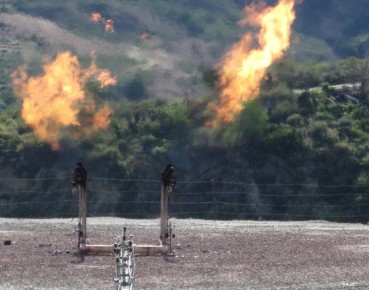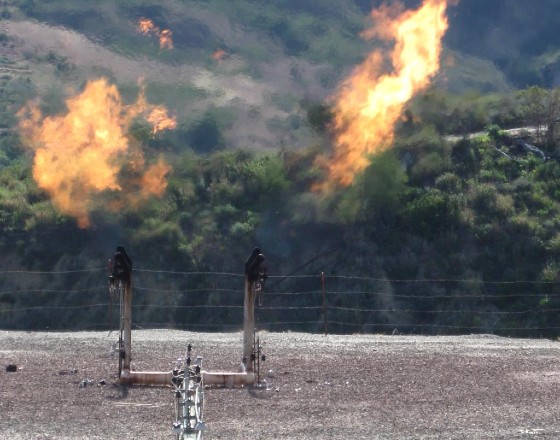Tydzień w gospodarce
Category: Trendy gospodarcze

(Rick Hurdle, CC BY-SA 2.0)
This was when the PGNiG, a state-owned company, appealed to Gazprom with the request to reconsider the price of the contract and took the case of the Yamal contract prices to the Arbitration Institute in Stockholm. The ruling paves the way for the Polish company to seek a refund going back to 2014. “The Arbitration recognized the PGNiG arguments and thus, it confirmed that the price for gas on Yamalsky contract was non-market and excessive,” CEO of PGNiG, Jerzy Kwieciński stated.
The decision means the Russian company is obliged to return about USD1.5bn to PGNiG, that is the difference between the price calculated on the new formula and the sum paid by PGNiG from November 1st, 2014, up to February 29th, 2020. Under the 1996 Yamal contract, Poland buys 10.2 billion cubic meters (bcm) of gas each year and has to pay a fixed price even if it has no need for the full amount of gas. The price has not been disclosed but the ruling indicated it was higher than that paid in West European markets.
PGNiG has notified Gazprom it will not be extending the Yamal contract after 2022. Poland is in the process of reducing its dependence on Russian gas and is importing liquefied natural gas from Qatar, the U.S. and other suppliers.
In 2012, the parties agreed to reduce gas prices by 10 per cent. In 2015, PGNiG sued Gazprom in the arbitration court in Stockholm on the case of reduction of prices on gas, as, according to Warsaw, the cost of gas in the current agreement was too high. In June 2018, the Tribunal issued an interim decision on the case. The Polish company said that the arbitrators recognized the right of PGNiG to demand price reduction in the contract for the supply of Russian gas via the gas pipeline Yamal-Europe.
The Polish Authorities stated that the country seeks to find a replacement for the gas supplies from Russia until 2022, when long-term contracts with Gazprom end. Among the possible alternatives — increase in volumes of purchase by Poland of liquefied natural gas (LNG) that comes into the country from Qatar and the United States. Another possibility is the construction of a gas pipeline, Baltic Pipe, which the project would connect Poland with the Norwegian shelf through Denmark.
“The rating headroom of PGNiG will benefit from its successful arbitration with Gazprom and Gazprom Export regarding the gas-supply contract price under the long-term Yamal contract,” says Fitch Ratings. However, a rating upgrade is unlikely due to the plunge in commodities prices and the deep global recession triggered by the coronavirus pandemic, and also PGNiG’s business profile and high capex plans.
The revised formula, as recently ruled by the arbitration tribunal in Stockholm, is largely linked to gas prices in the western European market instead of the previously applicable indexation to an oil and gas price mix. This reduces PGNiG’s cost of gas supplied by Gazprom and reduces the potential for a price-mismatch between gas imports from Russia and domestic gas sales (which are based on European gas prices).
According to PGNiG’s preliminary estimates, this results in a price difference payable by Gazprom to PGNiG of about USD1.5bn for the period November 2014 to February 2020, during which the price charged by Gazprom was above the European market price.
The estimated amount is substantial for PGNiG, higher than its reported EBITDA for 2019, net of impairment losses on property, plants and equipment, and sufficient to mitigate Fitch-projected weaker cash flow in 2020 due to the substantial decline in oil and gas prices. In its recently updated oil and gas price assumptions used in the base-case projections for oil and gas production, Fitch assumed the Brent oil price to decline to USD35/bbl in 2020 from USD65/bbl in 2019, before increasing to USD45/bbl in 2021.
Compared with other Fitch-rated Polish utilities, PGNiG has low leverage and substantial rating headroom, which will decrease by 2022 due to its large capex. PGNiG has also a solid liquidity position. The favorable arbitration decision enhances PGNiG’s rating headroom.
Fitch upgraded PGNiG’s rating to ‚BBB’ from ‚BBB-‚ in December 2019 to reflect the company’s progress in diversifying its contract portfolio for gas imports. This diversification brings greater business flexibility and reduces exposure to a potential price-mismatch between imports and domestic sales. In our view, the rating upside is limited following the upgrade due to the company’s business profile, including the significant share of EBITDA from E&P, and a high capex plan.
PGNiG has managed to improve the diversification of its gas imports since 2016, when the LNG terminal in Swinoujscie with a capacity of 5 bcm was commissioned. The proportion of purchases from Gazprom in PGNiG’s gas imports fell to 60 per cent in 2019 from 87 per cent in 2015. The share of LNG supplies in imports will further increase in the next several years, as PGNiG has signed several long-term contracts with US LNG suppliers, increasing the company’s LNG supplies portfolio to about 12 bcm from 2024 compared with about 3.5 bcm in 2019. PGNiG will also start sourcing gas from Norway (where its gas production will grow in the next few years) when the 10 bcm Baltic Pipe gas pipeline from Denmark to Poland becomes operational in late-2022.
According to forecasts of the International Energy Agency, the next decade may see Gazprom lose more than a third of its pipeline export volume to European countries. At the same time, the Russian company’s share in the European gas market may be reduced by almost a half. The demand for gas in the European Union will decrease by almost 10 per cent to 442 bcm. Taking into account non-EU countries demand will fall further by up to 607 bcm. The EU’s demand for imports at that time will increase to 400 bcm, primarily due to a fall in its own European production.
Assuming that the export of Russian gas to the countries of the former USSR and the rest of Europe will decrease proportionally, Gazprom’s pipeline deliveries to Europe will amount to 110-123 bcm per year. Based on the IEA forecast, these values correspond to 18.6–20.8 per cent of the European gas market share by 2030. For comparison, Gazprom reported in 2018 that it exported 201.8 bcm of gas to Europe. The company at this time accounted for 36.7 per cent of the total market. According to the IEA, the main reason for the decline in pipeline gas imports in Europe will be an increase in LNG supplies. LNG will account for more than 53 per cent of the global market by 2030 (44.6 per cent in 2018).
As an article in a Russian newspaper Kommersant states: “…in the coming years the EU is going to almost double the number of large-capacity regasification terminals. If by September 2019 there were 28 terminals with a capacity of 227 bcm of gas per year, in the coming years there are plans to build another 22 points for receiving liquefied gas, including in Albania and Ukraine (Odessa FSRU LNG)”.
In addition, the segment of spot deliveries is growing at a significant pace with respect to long-term contracts. It is the spot deliveries that create market conditions for the entire gas market. In spite of the obvious problems of this type of trade (first of all, gas exchange trading fails during periods of peak consumption), it allows consumers to dictate terms to the sellers and for traditional pipe deliveries.
If the downward trend in the share of pipeline deliveries continues then only in 2020 a decrease in export volumes through gas pipelines by at least 10-15 per cent can be expected. Moreover, larger suppliers will face greater falls than most. Gazprom may well lose up to 20 per cent of the last year’s exports and possibly even more.
In January 2020, Gazprom gas deliveries to Europe through Ukraine (amounting to 2.55 bcm) fell by two thirds compared to January last year, while transit service fees were paid at the rate of 5.52 bcm. This was announced on February 3rd by the head of the Gas Transportation System Operator of Ukraine Serhiy Makogon, who stated that 46 per cent of paid capacities were being used.
In May 2020, the contract for transit through Poland via the Yamal-Europe pipeline will end. But Gazprom has still not expressed any desire to discuss a new agreement with the Polish side. This means that 32-33 bcm of gas will have to be delivered through another route. Nord Stream 2’s capacity will not be enough to ensure export deliveries to Western Europe and since only Ukraine and Turkey will remain the main transit countries, it will be important for Poland to coordinate its actions with Kyiv. This will allow the country to pre-empt any Russian attempts to encourage the Ukrainians to allow their gas to travel at an increased rate.
Polish gas consumption amounts to 17 bcm a year, with supply in 2018 from domestic production (3.8 bcm), imports by pipeline from Russia (9 bcm), LNG imports (2.71 bcm) and pipeline imports from Germany and the Czech Republic (1.5 bcm). The share of Russian gas in Polish imports has fallen from 88.9 per cent in 2016 to 66.8 per cent in 2018, according to PGNiG figures.

